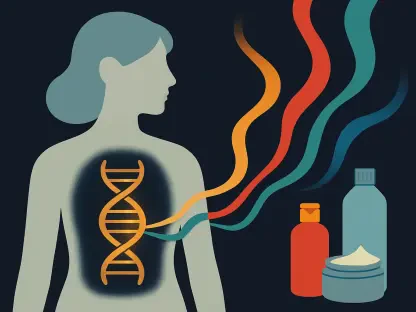The COVID-19 pandemic presented a global challenge, with governments and health institutions striving to contain the virus amid misinformation and rapid transmission. One pivotal approach was the development of various COVID-19 vaccine trials, employing adaptive methods to expedite recruitment while ensuring trial integrity. However, participation in these trials remained a significant barrier. This article explores the factors influencing individuals’ decisions to participate in COVID-19 vaccine trials, drawing lessons for future trial designs.
Personal Gains
Financial Rewards and Health Benefits
Motivations for involvement in COVID-19 vaccine trials often included financial rewards and health benefits. Many individuals sought monetary compensation as a primary incentive for participation. Additionally, the opportunity to gain early protection from COVID-19 was a significant motivator for some participants, who viewed the trial as a means to safeguard their health amidst the pandemic. For those struggling financially due to the economic impacts of the pandemic, the compensation offered by trials provided not only an incentive but also a much-needed financial reprieve. This monetary aspect was especially appealing in regions where economic instability was exacerbated by the pandemic’s fallout.
On the other hand, the prospect of deriving health benefits from early vaccine access was paramount for many. This urgency was often driven by personal or familial health concerns, as participants hoped to mitigate the risk of contracting the virus by being among the first to be vaccinated. Early access to the vaccine was seen as a protective measure, especially for those with pre-existing conditions or high exposure risks, such as healthcare workers. These motivations underscore the importance of aligning trial designs with participants’ immediate needs, both financial and health-related, to optimize recruitment efforts.
Balancing Risks and Benefits
Participants weighed the potential health benefits against perceived risks. While some were eager to receive early protection, others were cautious about the experimental nature of the trials. The rapid development of vaccines and unknown side effects led to concerns, with many using terms like “guinea pigs” to describe their apprehensions. This balancing act between potential gains and risks was a critical factor in the decision-making process. Many prospective participants expressed a desire for more transparency and detailed information about side effects and long-term health implications before committing to trial participation.
For some, the perceived benefits of gaining early protection from a potentially deadly virus outweighed the fears associated with the unknowns. However, others remained skeptical and opted to wait for more conclusive evidence of vaccine safety and efficacy before enrolling. These attitudes highlight the importance of addressing safety concerns preemptively through clear and candid communication. Sharing preliminary trial results, expert insights, and addressing commonly held misconceptions could help sway the undecided. Understanding this delicate balance between perceived risks and benefits is crucial for designing effective recruitment strategies.
Perceived Risk
Experimental Nature and Safety Concerns
The perception of COVID-19 vaccine trials as experimental and risky was a significant deterrent for many individuals. The rapid development of vaccines raised concerns about unknown side effects and long-term safety. Participants often expressed fears of being used as “guinea pigs,” highlighting the need for more extensive testing and evidence on vaccine safety before they would consider participation. These apprehensions were not unfounded, given the accelerated pace of vaccine development relative to typical timelines, which usually span several years.
The experimental aspect brought about additional layers of skepticism, particularly among groups with historically justified mistrust in medical research. Potential participants questioned the rigor of the trials and the thoroughness of the testing protocols, worrying that the rush to market could compromise safety measures. This backdrop of mistrust necessitated a robust approach to address and mitigate these fears, emphasizing the rigorous scientific and ethical standards adhered to during vaccine development. Providing detailed information about the trial phases, safety data from earlier stages, and endorsements from reputable health authorities played a critical role in alleviating some of these concerns.
Future Willingness Based on Evidence
Despite initial hesitations, some individuals showed a willingness to participate in the future once more extensive testing and evidence on vaccine safety were available. This group of participants indicated that their decision to engage in trials would be influenced by the accumulation of positive data and successful outcomes from earlier phases of the trials. Prospective participants often looked for concrete proof of effectiveness and a solid safety record before committing to a potentially risky endeavor.
The continual dissemination of trial results, post-trial monitoring reports, and transparent communication regarding both the successes and challenges encountered during the testing phases played a vital role in building this confidence. The more evidence that emerged illustrating the vaccine’s safety and efficacy, the more likely it was that skeptical individuals would reconsider their stance. This incremental buildup of trust through data transparency and continual updates can transform cautious observers into active participants, enhancing overall recruitment efforts over time.
Influence of Family and Community
Family and Societal Norms
Family and societal norms played a significant role in the acceptance or rejection of trial participation. Cultural and religious beliefs often acted as barriers, with individuals relying on the opinions and attitudes of their family members and community leaders. The influence of these social circles was a crucial factor in shaping individuals’ decisions. In many cultures, the endorsement or disapproval of influential family members had a profound impact on the willingness to participate in health-related activities, including vaccine trials.
The decision-making process was not solely individual but often a collective one, where social acceptance and adherence to communal norms took precedence. This societal pressure sometimes led to hesitancy, as individuals feared ostracization or criticism from their community. Conversely, positive endorsements from respected community figures could significantly sway opinions. Involving community leaders in educational campaigns and leveraging their trust within the community was an effective strategy to mitigate these barriers and foster a more supportive climate for trial participation.
Impact on Family Safety
The perceived impact on family safety could act as both a deterrent and a motivation for trial participation. For some, the potential risks to family members were a significant concern, leading to reluctance in joining the trials. Fear of adverse effects spilling over to their loved ones if something went wrong weighed heavily on individuals’ minds. Protective instincts often prevailed, resulting in outright refusal to participate despite personal beliefs in the trial’s importance.
Conversely, others were motivated by the desire to protect their families by contributing to the development of a safe and effective vaccine. Seeing participation as a selfless act that could eventually shield their loved ones from the virus, these individuals were driven by a sense of duty and responsibility. This dual impact on family safety underscores the need for comprehensive educational outreach that addresses both the direct and indirect implications of trial participation. Ensuring that participants understood the rigorous safety protocols and the potential long-term benefits for their families and communities helped to balance these contrasting motivations effectively.
Contributing for Others
Altruism and Community Benefit
Altruism emerged as a key motivator for some participants, who were driven by the desire to help the community return to normalcy and contribute to scientific progress. These individuals viewed their participation as a way to support the greater good and expedite the end of the pandemic. The widespread disruption caused by COVID-19 had instilled a sense of shared suffering and collective responsibility, prompting some to act selflessly for the benefit of the broader community.
The pandemic highlighted the interconnectedness of society, where individual actions could have ripple effects on public health. Participants motivated by altruism often cited a moral obligation to help advance medical knowledge and aid in the development of a vaccine that would protect millions. This sense of purpose and community solidarity reinforced the decision to participate despite inherent risks. Engaging this altruistic spirit through targeted messaging that emphasizes communal benefits and collective resilience was crucial for sustaining participation in vaccine trials.
Ensuring Demographic Representation
The focus on ensuring demographic representation in trials was another important factor. Participants recognized the need for diverse representation to assure vaccine efficacy for specific groups. Acting as role models, they aimed to instill vaccine confidence within their communities and encourage broader participation. In regions disproportionately affected by COVID-19, there was an acute awareness of how systemic inequities translated into health disparities, further motivating certain individuals to participate as representatives of their demographics.
Understanding that a one-size-fits-all approach in vaccine development might not be effective for every population, these participants saw their involvement as crucial for ensuring that the vaccine was safe and effective across various demographic segments. Their participation was framed not only as a personal contribution but also as a strategic effort to ensure equitable health outcomes. This consideration for demographic representation played a vital role in recruitment strategies, highlighting the importance of inclusive trial designs that reflect the diversity of the target populations.
Institutional Trust and Mistrust
Trust in Science
Trust in science was a driving force for many participants. Individuals who had confidence in scientific processes and institutions were more likely to engage in vaccine trials. This trust was often built on positive past experiences with medical research and a belief in the importance of scientific advancement. Participants with a strong faith in scientific rigor and ethical standards viewed the trials as necessary steps towards a viable solution to the pandemic.
The credibility of the institutions conducting the trials, including renowned universities and healthcare organizations, reinforced this trust. The transparency in sharing trial protocols, safety measures, and interim results further solidified participants’ confidence. Positive endorsements from health professionals and scientific bodies provided additional reassurance. Building and maintaining this trust through consistent and honest communication was pivotal in encouraging participation, especially amid widespread misinformation and skepticism about the rapid vaccine development process.
Historical Mistrust Among Minority Groups
Historical mistrust, particularly among minority groups, was a significant barrier to engagement in COVID-19 vaccine trials. Past injustices and unethical practices in medical research contributed to a deep-seated skepticism. Addressing this mistrust required transparent communication and efforts to rebuild trust within these communities. Historical incidents such as the Tuskegee Syphilis Study had left a lasting impact, fostering a cautious approach toward medical research among certain minority groups.
Overcoming this barrier involved acknowledging past wrongs, engaging in open dialogue, and demonstrating a commitment to ethical standards. Involving community leaders, minority researchers, and health professionals in the communication process helped bridge the trust gap. Efforts to ensure minority representation in trial leadership and addressing specific concerns related to these communities also played a critical role. This multifaceted approach aimed to slowly rebuild confidence and encourage participation by demonstrating respect, transparency, and accountability.
Accessibility of the Trial
Tailoring Trial Designs
Tailoring trial designs to address cultural and community-specific needs was crucial for facilitating participation. This included considering the unique concerns and preferences of different demographic groups, ensuring that the trial process was inclusive and respectful of diverse backgrounds. Effective engagement required sensitivity to cultural values, linguistic preferences, and community dynamics, customizing recruitment and retention strategies accordingly.
For example, providing informed consent materials in multiple languages, respecting religious practices, and ensuring culturally competent interactions were vital components of a tailored approach. Addressing logistical barriers such as transportation, childcare, and flexible scheduling adapted to participants’ lifestyles further enhanced accessibility. Recognizing and responding to these tailored needs demonstrated respect for participants’ backgrounds and increased their willingness to engage in the trials.
Logistical Considerations
Logistical considerations, such as the accessibility of trial locations and minimizing participant discomfort, were essential for encouraging participation. Ensuring that trials were conveniently located and that the process was as comfortable as possible helped to reduce barriers and increase engagement. Centralized trial sites in easily accessible locations, such as community centers or mobile clinics, facilitated participation by minimizing travel time and expenses.
Additionally, offering services such as transportation, food, and child care further alleviated the practical burdens associated with trial participation. Comfort measures, including clear instructions, support systems, and prompt communication, also played a role in enhancing the participant experience. Streamlining the logistical aspects not only improved participation rates but also contributed to a positive perception of the trial process, fostering sustained engagement and retention.
Transparent Communication
Transparent communication using community-trusted individuals to disseminate trial information was viewed as a facilitator. Leveraging the influence of respected community members and leaders helped to build trust and provide accurate information, countering misinformation and addressing concerns. Involving these trusted figures in educational campaigns created a credible communication channel, ensuring that the messages resonated with the target audience.
Clear, consistent, and transparent updates about trial progress, safety data, and outcomes were essential in maintaining trust and interest. Addressing participants’ questions and concerns promptly and honestly helped to build a rapport and ensure continued engagement. Community forums, webinars, and informational sessions hosted by trusted leaders facilitated open dialogue and fostered a sense of collective effort in overcoming the pandemic.
Comparative Insights from Other Qualitative Reviews
Recurrent Themes in Health-Related Trials
The COVID-19 pandemic posed a significant global challenge, compelling governments and health organizations to take swift action in containing the virus amidst widespread misinformation and rapid transmission. One crucial strategy in this effort was the swift development and testing of various COVID-19 vaccines using adaptive methods. These innovative approaches aimed to speed up participant recruitment while maintaining the integrity and reliability of the trials.
Despite the accelerated development, getting people to participate in these vaccine trials remained a substantial obstacle. Several factors influenced an individual’s decision to join a vaccine trial, ranging from concerns about safety and side effects to distrust in the medical system and misinformation circulating online.
This article delves into the various elements that affected people’s willingness to participate in COVID-19 vaccine trials. It examines how understanding these factors can provide valuable insights for designing future clinical trials. By addressing and mitigating these barriers, future trials can achieve higher participation rates and more effective outcomes, ultimately aiding in the rapid development of treatments and vaccines for emerging health threats.
Through examining past experiences and adapting strategies to encourage participation, the medical community can enhance its preparedness and response to potential global health crises in the future.









